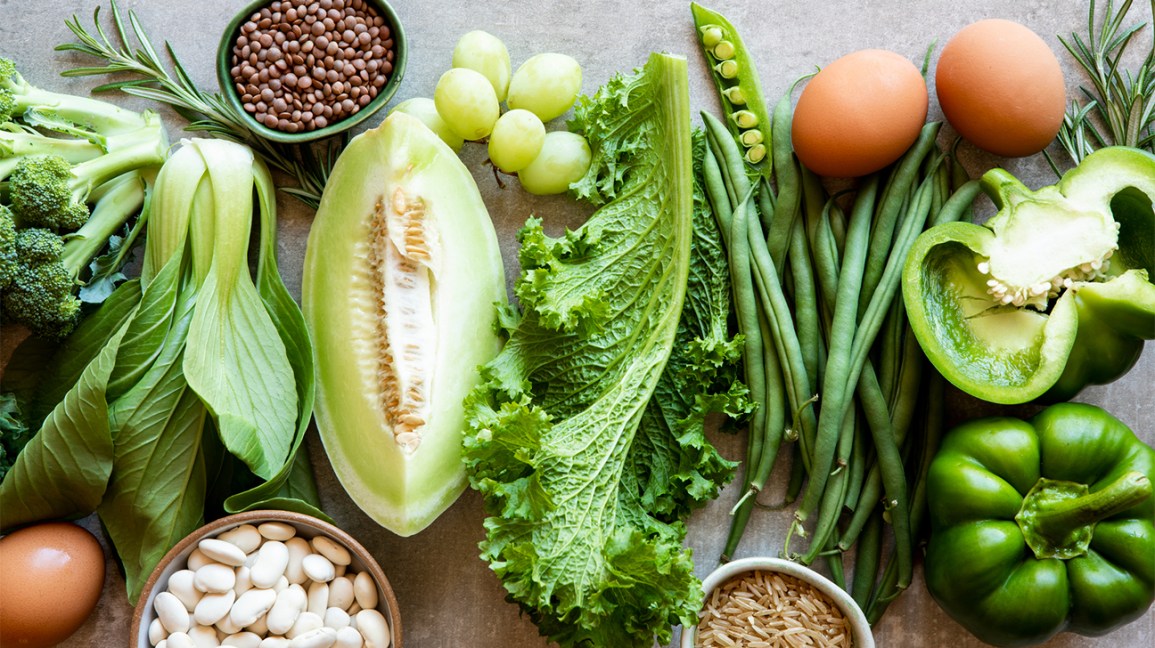
If you are considering becoming vegan, you may be wondering what the difference is between a vegan and a plant-based diet. This article will explain the benefits of a vegan lifestyle and how to make the right choice between plant-based and vegan meals. You can also find out more about how animal welfare issues may affect your eating habits.
There is a difference between vegan and plant-based diets
Veganism is a diet that is based primarily on plant-based food. Veganism also means that you avoid eating animal products. A vegan is committed to animal welfare. Plant-based diets may contain small amounts of meat, milk, and eggs. A plant-based diet is more flexible and can be tailored to suit individual preferences.
Today, people are making a greater effort to reduce the consumption of animal products and meat. This is reflected by the increasing amount of plant-based options in fast food restaurants, grocery stores, public events, and more. While a greater number of people choose a plant-based diet than ever before, there is still confusion about the differences between vegan and plant-based. This article will clarify the differences.

There are many differences between the two diets, including the amount of nutrients and protein. Plant-based diets tend to be lower in protein and fat but provide high-quality nutrition. Plant-based eating habits are not suitable for all people. Vegans must consume fortified foods rich in vitamin B12. But, a plant-based or vegan diet is generally healthy when it is well managed.
Benefits to veganism vs. plant-based eating
A plant-based diet has many health benefits. Plant-based foods have more vitamins, minerals than animal products. This diet also emphasizes whole foods, which have minimal processing. Healthy fats should be added to your meals to make you feel fuller for longer. It is a great way to reduce your chances of getting heart disease, cancer, or other health problems.
A vegan diet contains no animal products. Vegans who strictly avoid animal products may also be advised to stay away from leather, wool, beeswax and fur. Some studies show that a vegan diet helps lower blood pressure. You may be at greater risk for developing diabetes if you eat red meat or poultry. The high iron content in these foods may contribute to the increased risk.
Vegan diets are a great way to eliminate animal fat and provide essential nutrients to keep you healthy. Vegans also avoid the health risks that come with animal fats, such as heart disease. A recent study found that people who eat plant based diets are less likely than those who eat animal fat.

Choose between vegan or plant-based meals
Plant-based diets offer many benefits but some people find it difficult giving up meat. People who are looking for a meat-free diet have the good news that there is a growing range of meat substitutes. The key to a plant-based diet is choosing whole foods and avoiding processed foods.
Plant-based diets are great for eating healthy and ethically sound. Additionally, you'll be supporting the environment. A vegan diet can be a bit more restrictive than one that is plant-based, so you will need to be cautious when choosing a meal.
Veganism does not address ethical issues, but it has many advantages. Many vegans and vegetarians eat a variety foods made with plant-based components.
FAQ
What are the top 10 healthy habits?
-
Have breakfast every day.
-
Don't skip meals.
-
Maintain a balanced diet.
-
Get lots of water.
-
Take care to your body.
-
Get enough sleep.
-
Stay away from junk food.
-
Daily exercise
-
Have fun
-
Meet new people.
What are the ten best foods to eat in America?
These are the top 10 foods to eat.
-
Avocados
-
Berries
-
Broccoli
-
Cauliflower
-
Eggs
-
Fish
-
Grains
-
Nuts
-
Oats
-
Salmon
Exercise: Good and bad for immunity?
Your immune system is strengthened by exercise. Exercise boosts the production of white blood cells in your body that fight infections. You also eliminate toxins. Exercise helps prevent diseases like cancer and heart disease. It reduces stress.
But too much exercise can damage your immune system. You can cause muscle soreness by working out too hard. This causes inflammation and swelling. Your body then has to produce more antibodies to fight off infection. Problem is, extra antibodies can trigger allergies and other autoimmune conditions.
So, don't overdo it!
Why does our weight change as we get older?
How do you tell if there are any changes in your bodyweight?
Weight loss occurs when there is less fat than muscle mass. This means that you must consume more calories than you use daily. Reduced activity is the leading cause of weight gain. Other factors include stress, pregnancy and hormonal imbalances. If there is more body fat than muscle mass, then weight gain can occur. It happens when people eat more calories than they use during a given day. Common reasons include overeating, increased physical activity, and hormonal changes.
Our bodies lose weight because we eat fewer calories than we burn. Exercise regularly increases your metabolism rate, which allows you to burn more calories every day. But this doesn't guarantee that we'll lose weight. The important thing is to see if we're losing or gaining muscles. Weight loss is possible if you burn more calories than you consume. However, if we consume more calories than we burn, we end up storing them as extra fat.
As we grow older, we tend to become slower at moving around and therefore we don't move as much. We also tend to eat less food than we did when we were younger. As a result, we gain weight. On the flipside, we are more muscular than we really need and appear larger.
There's no way to tell how much weight you've lost unless you weigh yourself every week. There are many ways you can measure your weight. You can also measure your waistline, your hips or your thighs. Some people prefer using bathroom scales and others prefer tape measures.
If you want to track your progress, you should try weighing yourself once a week and measuring your waistline once a month. You can also take photos of your self every few months to see the progress you have made.
You can also find out how much you weigh by looking up your height and weight online. If you are 5'10" tall, and you weigh 180 lbs, then you would probably weigh 180 lbs.
Statistics
- WHO recommends consuming less than 5% of total energy intake for additional health benefits. (who.int)
- nutrients.[17]X Research sourceWhole grains to try include: 100% whole wheat pasta and bread, brown rice, whole grain oats, farro, millet, quinoa, and barley. (wikihow.com)
- The Dietary Guidelines for Americans recommend keeping added sugar intake below 10% of your daily calorie intake, while the World Health Organization recommends slashing added sugars to 5% or less of your daily calories for optimal health (59Trusted (healthline.com)
- According to the 2020 Dietary Guidelines for Americans, a balanced diet high in fruits and vegetables, lean protein, low-fat dairy and whole grains is needed for optimal energy. (mayoclinichealthsystem.org)
External Links
How To
What does the "vitamin") mean?
Vitamins are organic compounds naturally found in food. Vitamins allow us to absorb nutrients from food. Vitamins cannot come from the body so food must provide them.
There are two types: water-soluble and fat-soluble vitamins. Water-soluble vitamins dissolve quickly in water. Examples include vitamin C,B1 (thiamine), B2 (riboflavin), B3 (niacin), B6 (pyridoxine), folic acid, biotin, pantothenic acid, and choline. Fat soluble vitamins are stored in the liver and fatty tissue. Examples include vitamin D, E, K, A, and beta carotene.
Vitamins are classified based on their biological activity. There are eight major groups of vitamins:
-
A – Essential for normal growth, and the maintenance of good health.
-
C is important for nerve function and energy production.
-
D - Vital for healthy bones and teeth
-
E is required for good vision and reproduction.
-
K - Required for healthy nerves and muscles.
-
P – Vital for building strong bones.
-
Q - aids in digestion of iron and iron absorption
-
R - necessary for making red blood cells.
The recommended daily intake (RDA), of vitamins varies with age, gender and physical conditions. The U.S. Food and Drug Administration sets RDA values.
For adults over 19 years, the RDA is 400 mg per day for vitamin A. However, pregnant women need 600 micrograms per day because it is important for fetal development. Children ages 1-8 require 900 micrograms per day. Infants under one year of age require 700 micrograms per day, but this amount decreases to 500 micrograms per day between 9 months and 12 months of age.
Children aged between 1-18 years old who are obese require 800 micrograms per Day, while overweight children need 1000 micrograms every day. Children underweight or obese will require 1200 micrograms a day to meet their nutritional requirements.
Children aged 4-8 years old who have been diagnosed as having anemia require 2200 micrograms of vitamin C per day.
2000 micrograms per person is necessary for general health. Because of their higher nutrient needs, women who are pregnant or nursing need 3000 mg per day.
Adults over 70 years of age need 1500 micrograms per day since they lose about 10% of their muscle mass each decade.
Women who are pregnant, nursing or breastfeeding need more than the RDA. Pregnant and breastfeeding women require 4000 micrograms each day during pregnancy and 2500 Micrograms each day after birth. Breastfeeding mothers need to consume 5000 micrograms each day when breastmilk has been produced.